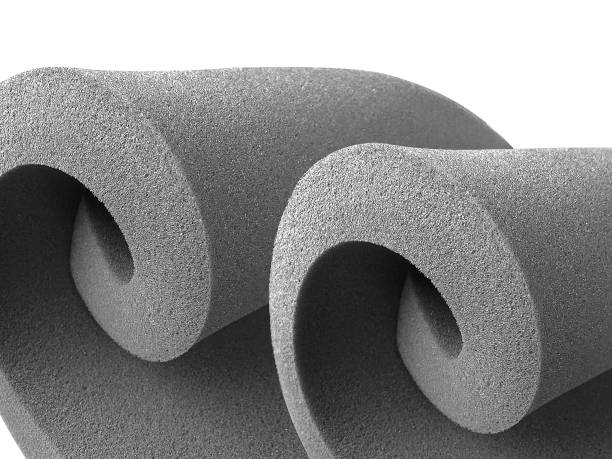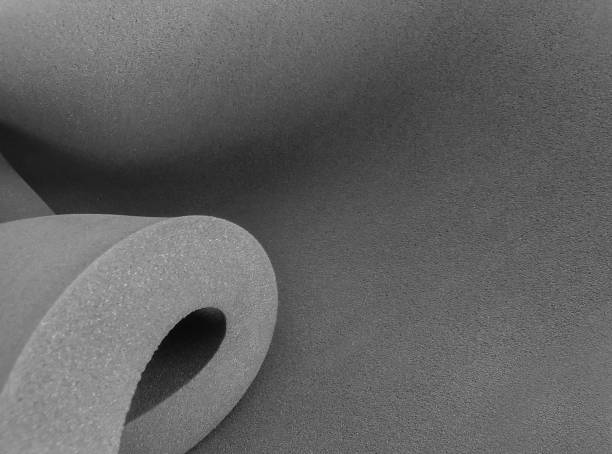Does Sound Absorbing Foam Work? Everything You Need to Know
Discover the effectiveness of sound absorbing foam with FUNAS. Our comprehensive guide explores whether sound absorbing foam works, offering insights into its functionality and benefits. Ideal for enhancing acoustics and reducing noise, this article answers your questions and provides all the essential details. Learn how sound absorbing foam can transform your space, ensuring a quieter, more pleasant environment.
- Preface
- What is Sound Absorbing Foam?
- Is Foam a Good Sound Absorber?
- How Much Does Foam Reduce Sound?
- How Effective Are Sound Absorbing Panels?
- What Are the Disadvantages of Acoustic Foam?
- Conclusion
- FAQs
- Is foam a good sound absorber?
- How much does foam reduce sound?
- How effective are sound-absorbing panels?
- What are the disadvantages of acoustic foam?
Preface
Sound-absorbing foam is a popular material used in various environments to reduce noise and improve acoustics. Whether you're setting up a home theater, recording studio, or simply looking to reduce noise in your office, this material is widely recommended. But does sound-absorbing foam really work? In this article, we'll explore how it functions, its effectiveness, and address common concerns related to its use.
What is Sound Absorbing Foam?

Sound-absorbing foam is a specialized material designed to reduce noise by absorbing sound waves. It works by converting sound energy into heat, which then dissipates. The foam’s open-cell structure traps sound waves, which helps reduce echo and reverberation in a space. It is often used in various acoustic treatments, including wall panels, ceiling tiles, and floor mats.
While foam is a common solution for noise reduction, its effectiveness can depend on several factors, such as the type of foam, thickness, and the frequency of sound being targeted.
Is Foam a Good Sound Absorber?
Yes, foam can be a good sound absorber, but its effectiveness varies depending on the type and quality of the foam. Acoustic foam, often made from materials like polyurethane or melamine, is specifically designed to absorb sound. It is effective at reducing high-frequency noise such as echoes, reverb, and sharp sounds. However, it may not be as effective at absorbing low-frequency sounds like bass or deep rumbling noises.
When used correctly, foam can significantly improve sound quality by reducing unwanted noise and enhancing clarity. It is especially effective in environments like recording studios, theaters, or offices where noise control is important.
How Much Does Foam Reduce Sound?
The amount of sound reduction depends on several factors, including the foam’s thickness, density, and placement in the room. In general, sound-absorbing foam can reduce noise levels by 25 to 50%. Thicker foam is typically more effective at absorbing sound, especially for higher frequencies. However, it’s important to note that foam alone may not completely block out sound.
For optimal results, foam should be used in combination with other soundproofing materials, such as mass-loaded vinyl, to achieve a more complete noise reduction.
How Effective Are Sound Absorbing Panels?

Sound-absorbing panels are highly effective at reducing noise and improving acoustics in a space. These panels are typically made from materials like foam, fiberglass, or fabric-wrapped acoustical panels. They help reduce sound reflections and echoes by absorbing sound waves that would otherwise bounce off walls and other surfaces.
When properly installed, sound-absorbing panels can significantly improve the sound quality of a room, making them ideal for use in recording studios, home theaters, and conference rooms. The effectiveness of these panels depends on their placement and the size of the room, as well as the types of sounds that need to be absorbed.
What Are the Disadvantages of Acoustic Foam?
While acoustic foam is a great tool for improving sound quality, it does have some limitations. One of the main drawbacks is that foam is not as effective at blocking sound from entering or exiting a room. It primarily absorbs sound within the room but does little to stop noise from traveling through walls or ceilings.
Additionally, foam can be expensive, especially for larger areas, and its effectiveness can be limited if not properly installed. Foam may also degrade over time if exposed to excessive moisture or UV light, reducing its ability to absorb sound effectively.
Conclusion
Sound-absorbing foam can be a valuable tool for reducing noise and improving acoustics in a variety of settings. While it is effective at absorbing high-frequency sounds and reducing echoes, it is less effective at blocking low-frequency sounds. For optimal results, foam should be combined with other soundproofing materials. Understanding the limitations and advantages of foam will help you determine if it’s the right solution for your noise reduction needs.
FAQs
Is foam a good sound absorber?
Yes, foam is a good sound absorber, particularly for high-frequency sounds. It helps reduce echoes and reverberation in rooms.
How much does foam reduce sound?
Foam can reduce sound levels by 25 to 50%, depending on its thickness and placement in the room. However, it may not block all types of noise.
How effective are sound-absorbing panels?
Sound-absorbing panels are highly effective at reducing echoes and improving the overall acoustics of a room. They are especially useful in spaces like studios and theaters.
What are the disadvantages of acoustic foam?
The main disadvantage of acoustic foam is that it does not block sound from entering or exiting a room. It is also not as effective at absorbing low-frequency sounds.

Ultimate 2026 Guide to Car Noise Insulation: Silence Your Ride

Ultimate Guide to Rubber Sheets: How to Choose in 2026

Ultimate Guide to Glass Wool: Properties, Uses & Benefits

The Ultimate Guide to Glass Wool Insulation 2026
FAQ
What is the typical delivery time for custom orders?
Our daily production capacity is 800 cubic meters. Delivery time varies depending on the complexity of the insulation material wholesale order, but we can deliver large quantities of customized products within 4-6 weeks after the approval date, and small quantities can be delivered within 15 days.
How to start a consultation?
You can contact us through our website, phone, or email. We will arrange a professional staff to discuss your needs about best thermal insulator and how we can help you.
service
Can I request custom dimensions or properties for my insulation needs?
Yes, we specialize in custom solutions. Whether you need specific dimensions, thicknesses, densities, or additional coatings, we can work with you to manufacture insulation products tailored to your exact requirements of good materials for heat insulation.
What is your shipping and delivery process like?
We offer reliable logistics services for insulation material wholesale, both domestically and internationally. Our team ensures secure packaging, timely shipping, and real-time tracking so that your order reaches you in perfect condition and on schedule.
You might also like

Wholesale blue Rubber-plastic Board Rubber foam panel sheet

wholesale black nitrile rubber foam sheet rubber NBR foam sheet rubber foam insulation sheet for hvac system
NBR and PVC are the main raw materials, which are softthermal insulation and energy-saving materials foamedthrough special processes.

Wholesale black Rubber-plastic Board Rubber foam panel sheet
Leave a message
Have any questions or concerns about our products? Please leave us a message here and our team will get back to you promptly.
Your queries, ideas, and collaboration opportunities are just a click away. Let’s start a conversation.



















































